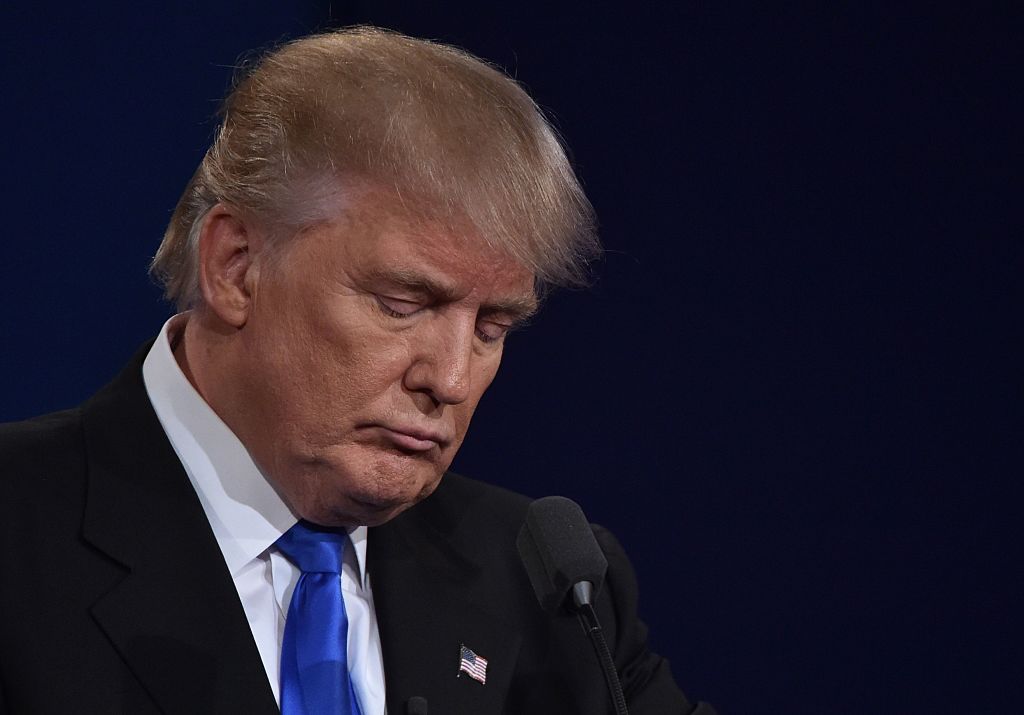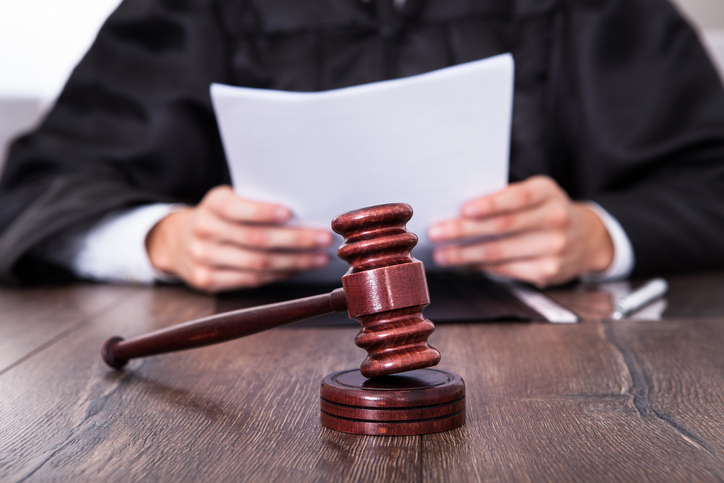To print this article, all you need is to be registered or login on Mondaq.com.
“Any request for an extension of time . . . will be looked
upon with disfavor.” U.S. District Court for the Eastern
District of Virginia Local Rule 7(I)
Have you or has your company just been sued or
threatened with a lawsuit in the Eastern District of Virginia
Rocket Docket? Regardless of what you have heard, it is true that
the United States District Court for the Eastern District of
Virginia is a unique and special forum. Attorneys who regularly
appear in courts throughout the United States appreciate that local
practice and custom diverge from one court to the next, despite the
overarching constraints of the Federal Rules of Civil Procedure.
The EDVA Rocket Docket is exceptional not only because of its speed
in adjudicating cases, and it is fast, but also because of its
tradition of excellence that makes no concessions in its demand for
high- caliber advocacy in the face of a rapid-pace litigation
environment.
It is widely written and recounted that the EDVA speed gives
special advantage to plaintiffs who enjoy some element of surprise
and superior advance preparation before launching their cases in
the Rocket Docket. But guided by experienced counsel, there are
innumerable examples of resourceful defendants who, in a matter of
a few short months, have rendered their competitor’s patents
invalid, obtained enviable damages awards through effective
counterclaims, or otherwise successfully removed the cloud of
litigation over their businesses.
History, Notoriety, & Speed of the EDVA Rocket Docket
The United States Court for the Eastern District of Virginia has
a long and illustrious history. As one of the original thirteen
United States, the Commonwealth of Virginia has been home to the
United States Court for the “District of Virginia” since
that court was originally established by the Judiciary Act of 1789,
signed into law by George Washington. Thirty years later, in 1819,
Congress subdivided the court into two judicial districts—the
Western District of Virginia (“WDVA”) and the Eastern
District of Virginia (“EDVA”). Although the boundaries
have shifted over time, most notably after West Virginia became its
own state, the EDVA today has jurisdiction over Virginia’s most
populous regions, including the suburbs of Washington, DC in
Northern Virginia, Hampton Roads, and Richmond, the state’s
capitol. The EDVA has courthouses in four locations: (1)
Alexandria, (2) Norfolk, (3) Richmond, and (4) Newport News.
The EDVA often enters the public spotlight due
to the cases that it handles, such as the corruption trial of
former Virginia Governor Bob McDonnell, espionage indictments
brought against Aldrich Ames, Robert Hanssen, and Harold Nicholson
as well as the terrorism cases against Ahmed Omar Abu Ali, Zacarias
Moussaoui, and the five Somali pirates. However, the court is most
widely known, at least within legal circles, as the “Rocket
Docket,” a moniker for the rapid speed at which the court
adjudicates and disposes of cases on its docket. There are other
“rocket dockets,” such as the U.S. District Court for the
Western District of Wisconsin, but the EDVA has enjoyed that title
for the longest time—consistently, year after year holding
average-time-to-trial statistics somewhere between six to eight
months from the initial scheduling conference. Not surprisingly,
therefore, the court has adopted the motto, “Justice delayed
is justice denied.”
Judicial speed and efficiency are matters of
tradition at the EDVA that likely dates back to the 1950s during
the tenure of Judge Walter E. Hoffman who was known to hold court
on weekends and holidays, rule from the bench upon conclusion of
argument, and counsel lawyers that in his court,
“continuance” was an obscene word. See United States v.
Ferguson, 432 F. Supp.2d 559, 569 n.10 (E.D. VA 2006) (citing The
“Rocket Docket” Judge Bans Continuances, Lawyers Monthly,
May 1989). Although the speed of the court’s adjudication is
what often grabs headlines, it is precisely this entrenched
judicial aversion to continuances that most radically shapes the
experience of counsel and the parties who appear before the court.
Regardless of the complexity and surprise attendant to any
litigation, the trial date and the succession of procedural
deadlines preceding it, stand fixed and immutable—so much so
that experienced counsel know better even than to ask for more
time.
Surviving & Thriving in EDVA
Litigation
As a consequence of unforgiving schedules,
litigating before the EDVA demands a type of discipline, attention
to detail, and organization that is foreign to many practitioners
and more akin to project management taught in business schools and
logistics training offered in military academies. Not only does the
case schedule advance rapidly, but also major aspects of fact
discovery, expert discovery, dispositive motions, and even trial
preparation necessarily move forward in parallel. Even the best
case can be crippled by procedural missteps that result in
substantive waivers.
It is often surmised that the EDVA’s rapid
adjudication of cases ultimately conserves party resources, but the
notion that the rocket docket saves litigation expense is likely
misplaced. Whether the parties are entangled in antitrust,
contract, regulatory, RICO, securities, fraud, tortious
interference, banking, or intellectual property matters such as
patent, trademark, trade secret, or copyright cases, there is a
certain amount of substantive work that needs to be done to
effectively prosecute claims or assert defenses. The rocket docket
certainly does save time but whether the hard work of trial
preparation is adequately accomplished depends heavily upon both
the skill of counsel and the commitment of their clients. The
question of whether the rocket docket fairly achieves the ends of
justice is equally elusive, prompting the pragmatic response from
Judge Ellis that “I cannot give you answer, but there are
plenty of consumers of the ‘rocket docket,’ so you should
ask them.” Judge T.S. Ellis, III, Quicker and Less Expensive
Patent Enforcement in the U.S., CASRIP Publication Series:
Streamlining Int’l Intellectual Property N. 5 at 21.
For all these reasons, premium value is placed
upon staying on schedule and on track in implementing litigation
strategy before the EDVA. Invariably, obtaining successful results
before the EDVA requires division of labor with clear assignments
and effective leadership that inspires the most from the
collaborative work among counsel, clients, experts, and vendors.
Moreover, unavailability of counsel is not a justification for
continuance in an environment where the court does not countenance
delay.
Recognizing that many of its matters are
handled by out-of-town counsel, the EDVA local rules require
competent local counsel “who shall have such authority that
the Court can deal with the attorney alone in all matters connected
with the case.” EDVA Local Rule 83.1(D)(3). Because local
counsel may be called upon to act when foreign counsel is
unavailable, utmost care should be given to the selection of local
counsel who has the expertise and firm resources available to make
meaningful and necessary contributions to the case.
Typical EDVA Case Schedule
EDVA Local Rule 16(B) establishes four
significant scheduling events along the short rode to trial before
the United States District Court for the Eastern District of
Virginia. Those four events, discussed in turn below, include (1)
the Local Rule 16(B) Order, (2) preparation and submission of the
Parties’ Discovery Plan, (3) the Initial Pretrial
Conference/Order, and (4) the Final Pretrial Conference.
1. The Local Rule 16(B) Order
EDVA Local Rule 16(B) requires that “not
later than ninety (90) days from first appearance or one hundred
and twenty (120) days after service of the complaint,” the
court shall enter an order setting dates for the following:
(a) the Initial Pretrial Conference (usually
within 30 days of the Local Rule 16(B) Order and also requiring
submission of the Parties’ Discovery Plan),
(b) completion of discovery (usually 90-120
days from the date of the Local Rule 16(B) Order),
(c) the Final Pretrial Conference (ordinarily
one week after completion of discovery), and
(d) “wherever practicable, the trial
date” (usually, no trial date is set in the Order).
Especially in the Alexandria Division of the
EDVA, the Local Rule 16(B) Order acts as the starting gun for fact
discovery. Ordinarily, the Local Rule 16(B) Order states,
“Discovery may begin as of receipt of this Order.” Due to
the shortness of the discovery period, experienced counsel
typically serve interrogatories, document requests, and other
written discovery on the day that the Local Rule 16(B) Order
issues.
As can be seen, this practice lays out a
daunting schedule. Parties will have a minimum of 90 days to
complete discovery, and then, after completing discovery, they will
have a minimum of four (4) weeks to prepare for trial.
The first few weeks or months following the
filing of the complaint deceptively appear to be a quiescent time
in the life of a case pending before the EDVA. However, that often
is not so because that time is consumed with briefing of dismissal
or transfer motions. And, that should not be so because as
experienced counsel knows, that time in the case is very precious
and must be put to good use.
It is a time to study the issues and develop
strategies and themes that will guide the litigation team through
discovery and into trial. Unlike other jurisdictions where
litigation progresses in phases, trial preparation in the EDVA
begins upon the filing of the complaint, and every effort expended
should add something of value to trial preparation.
It is a time to prepare for discovery. On the
defensive side, it is a time to collect and review client documents
that will almost certainly be requested by the opponent and
interview and prepare potential deposition and trial witnesses. On
the offensive side, it is a time to prepare written discovery to
serve on the opponent, identify party and non-party deposition
witnesses, and prepare to take the depositions.
It is a time to retain experts and have them
begin developing their opinions and drafting their reports, which
can be refined during discovery.
It is a time to begin identifying trial
exhibits and creating trial exhibit lists, which can be tailored
and adjusted during discovery.
In patent cases, it is a time to develop claim
construction positions and prepare for claim construction briefing
and the Markman hearing.
Above all, it is a time to assemble the
litigation team while involving the client to leverage the
client’s institutional knowledge and to avoid misunderstandings
and strategy miscues. It is also a time to not only develop a plan
that realistically addresses all of the projects that will need to
be completed, but also to clearly assign responsibility for those
projects to team members and to decide when each task needs to be
initiated and completed.
2. The Parties’ Discovery Plan
The Parties’ Discovery Plan, also referred
to as the parties’ Rule 26(f) report, is filed as a joint
submission, indicating where, if at all, the parties differ on
their proposals. The Parties’ Discovery Plan proposes a
schedule for the exchange of disclosures under Federal Rule of
Civil Procedure 26(a)(1), exchange of expert discovery, the format
in which documents will be exchanged, and other pretrial matters
depending on the nature of the action. The discovery plan must fit
within the framework and dates established in the Local Rule 16(B)
Order.
The parties also report on the status of
settlement discussions, if any, and disclose whether they consent
to trial before a magistrate judge.
3. The Initial Pretrial Conference/Order
The Initial Pretrial Conference, if necessary,
is held one week after the parties submit their discovery plan. If
the parties do not indicate any disagreement in their joint
discovery plan, the court will often take the Initial Pretrial
Conference off calendar and issue an Order, frequently called a
“Rule 16(b) Scheduling Order” that adopts the
parties’ plan. Otherwise, the court will conduct the conference
to hear argument on each side’s scheduling proposals.
Shortly after the conference, the court enters
its Rule 16(b) Scheduling Order and adopts, where agreeable, the
deadlines in the Parties’ Discovery Plan, establishes new
deadlines where necessary, and lays out other ground rules
governing the parties’ pretrial conduct.
4. The Final Pretrial Conference
The Final Pretrial Conference is often
scheduled about one week after completion of discovery. The main
event of the Final Pretrial Conference is setting the trial date,
which is usually sometime between 4 to 8 weeks from the Final
Pretrial Conference.
Despite having just completed discovery, the
parties are required to complete a host of other trial-related
tasks on or before the Final Pretrial Conference, including
submission of trial exhibit lists, trial witness lists, and
stipulations of uncontested facts. The parties are required to
exchange trial exhibits before the Final Pretrial Conference, and
objections to exhibits are due ten (10) days after the
conference.
Local Practice – Pitfalls, Missteps, &
Warnings
The United States District Court for the
Eastern District of Virginia has enacted local rules that, in some
instances, modify the Federal Rules of Civil Procedure and, in
other instances, significantly add to those rules. EDVA Local Rule
83.1(D) requires out-of-state counsel to certify that they have
read the local rules, which is a necessary but not sufficient
orientation to practicing before the EDVA. Some of the more common
pitfalls and missteps as well as idiosyncrasies of practice before
the EDVA are discussed below:
While other submissions may be filed
electronically, the complaint must be filed in the clerk’s
office. Similar to other jurisdictions, the complaint must be filed
with a completed JS44 Civil Cover Sheet together with the filing
fee from the published Clerk’s Office Fee Schedule.
Financial Interest Disclosure Statement
EDVA Local Rule requires ALL PARTIES who are
“non-governmental corporations, partnerships, trusts, or other
similar entity” to file a Financial Interest Disclosure
Statement, describing the ownership and structure of the party. The
primary purpose of the disclosure is to enable the judges to
determine if they have a potential conflict in presiding over the
matter due to a financial interest in the party.
Supporting Brief Requirement. All motions must
be supported by a brief that states the factual and legal bases for
the relief sought. EDVA Local Rule 7(F).
Noticing a Motion for Hearing. It is not
enough to merely file moving papers. EDVA Local Rule 7(E) requires
the moving party “to set the motion for hearing or arrange
with opposing counsel for submission of the motion without oral
argument.” The penalty for not following through on this
requirement is severe. “Unless otherwise ordered, a motion
shall be deemed withdrawn if the movant does not set it for hearing
(or arrange to submit it without a hearing) within thirty (30) days
after the date on which the motion is filed.” Id.
Meet and Confer. Before setting a motion for
hearing, counsel for the moving party has an obligation to meet and
confer with opposing counsel “in a good- faith effort to
narrow the area of disagreement.” EDVA Local Rule 7(E). A
statement certifying that counsel have met and conferred is
required in all motions. EDVA Local Rule 37.
Briefing Schedule. This is an example of how
procedure in the EDVA can diverge even from the local rules as a
matter of practice under a case scheduling order.
Local Rules. The local rules establish the
default briefing schedule for motions practice. Opposition briefs
are due eleven (14) days after service by the moving party. The
moving party then has three (6) days to file and serve a reply
brief. EDVA Local Rule 7(F)(1).
One-Week Accelerated Briefing/Hearing Schedule
– Rule 16(b) Scheduling Orders. The default briefing schedule for
non-dispositive motions before the magistrate judge is often
modified in the Rule 16(b) Scheduling Order. Fridays at the EDVA
are typically reserved for hearings on motions, and scheduling
orders are crafted to get parties quickly before the court to
resolve disputes. Under a typical scheduling order, if a moving
party files and serves a non-dispositive motion no later than 5:00
pm on a Friday and the motion is noticed for hearing at 10:00 am on
the following Friday, then the opposition to the motion is due no
later than 5:00 pm on the following Wednesday before the hearing.
Any reply to the opposition is due as soon as possible on Thursday
to give the court enough time to consider it before the hearing the
next day. Often the court will rule from the bench, initiating the
default eleven (11) day compliance deadline under EDVA Local Rule
37(C). Note: hand service by 5:00 pm on a Friday under Fed. R. Civ.
P. 5 is required to activate this one-week briefing/hearing
schedule. Otherwise, Fed. R. Civ. P. 6 adds three days to the date
of service causing the filing to miss the 5:00 pm Friday filing
deadline. This problem is often avoided by language in the
scheduling order that equates hand service with the court’s
electronic ECF filing and service.
Agreement among Counsel regarding Extensions
of Time. EDVA Local Rule 7(G) plainly states, “Motions for
continuances of a trial or hearing date shall not be granted by the
mere agreement of counsel” and “No continuance will be
granted other than for good cause and upon such terms as the Court
may impose.”
Page Limitations. Opening and opposition
briefs may not exceed thirty (30) pages. A rebuttal brief is
limited to twenty (20) pages. A “page” is a typewritten
8-1/2 inch x 11 inch page, double spaced, where all writing,
including footnotes, is in 12 point Roman style or 10 pitch Courier
style font and one-inch margins. EDVA Local Rule 7(F)(3).
Sanctions for Unwarranted Motions Practice.
The EDVA judges expect counsel to cooperate in narrowing disputes
and to avoid engaging in unwarranted, tactical motions practice.
Consequently, it is not uncommon for sanctions to be imposed under
EDVA Local Rule 37(G), which provides, “The presentation to
the Court of unnecessary discovery motions, the presentation to
another party or non-party of unnecessary discovery requests of any
kind, as well as any unwarranted opposition to proper discovery
proceedings, will subject such party to appropriate remedies and
sanctions, including the imposition of costs and counsel
fees.”
No Set Time for Summary Judgment Briefing.
EDVA Local Rule 56(A) does not specify a particular timeframe or
deadline for briefing summary judgment motions, except to advise
that “[n]o motion for summary judgment shall be considered
unless it is filed and set for hearing or submitted on briefs
within a reasonable time before the date of trial, thus permitting
a reasonable time for the Court to hear arguments and consider the
merits. . . .” The judges have historically been receptive to
motions for summary judgment and inclined to enter summary judgment
when it appears there are no genuine, material facts in
dispute.
Listing of Undisputed Facts and Number of
Motions. EDVA Local Rule 56(B) requires the statement of undisputed
facts to be included in the brief in support of the motion for
summary judgment as “a specifically captioned section.”
Likewise, the brief in opposition must contain “a specifically
captioned section” identifying the facts that are contended to
be in dispute. As a point of caution, particular care must be
accorded to the statement of facts in an opposition brief because
the local rule permits the court to “assume that facts
identified by the moving party in its listing of material facts are
admitted, unless such a fact is controverted in the statement of
genuine issues filed in opposition to the motion.” EDVA Local
Rule 56(C) requires leave of court to file more than one motion for
summary judgment. Ordinarily, all separate grounds for summary
judgment must be included in a single motion.
15-Day Objection Deadline. Perhaps the most
peculiar and surprising rule to out-of-state counsel is the
requirement under EDVA Local Rule 26(C) to serve objections
“to any interrogatory, request, or application under Fed. R.
Civ. P. 26 through 37” within fifteen (15) days after
receiving service. This rule does not otherwise alter the deadlines
under the federal rules for substantive responses to discovery. For
example, after receiving interrogatories from the opponent, a party
has fifteen (15) days to serve its written objections to the
interrogatories but the party’s substantive answers to the
interrogatories are not due until thirty (30) days after receipt of
service as provided under the federal rules. The purpose of the
accelerated objection rule is to assist the parties and the court
in quickly identifying and resolving discovery disputes as they
arise. Failure to comply with the rule may result in waiver of the
objections.
Compliance with Discovery Orders. The default
deadline under the local rules for complying with any discovery
order (answering interrogatories, responding to admission requests,
document production, inspections, etc.) is a very short eleven (11)
days. EDVA Local Rule 37(C).
Certain Party Deponents Must Appear in the
District. Under EDVA Local Rule 30(A), any “party” who
properly files a civil action in one of the divisions of the EDVA
can be compelled to appear in that division for deposition. The
rule specifies that “party” includes an “officer,
director, or managing agent” of a party and, in practice, a
“party” deposition includes a Rule 30(b)(6) witness
appearing on behalf of the party. EDVA Local Rule 30(A) further
defines a party subject to deposition in the division as “[a]
defendant, who becomes a counterclaimant, cross-claimant, or
third-party plaintiff.”
“Reasonable Notice” of a Deposition.
Under EDVA Local Rule 30(H), eleven (11) days advance notice of
deposition is presumptively reasonable notice for taking a
deposition within the continental United States.
Limitation on Non-Party Depositions. A growing
practice in the EDVA is the inclusion of a limitation on the number
of non-party, non-expert depositions in the case scheduling order.
Typically, only five (5) such depositions are permitted without
leave of court.
Increased Number of Interrogatories. In
setting the scheduling order, the court is often amenable to party
requests to expand the number of interrogatories permitted to each
party under the Federal Rules of Civil Procedure.
EDVA Dockets, Jurisdiction, & Venue
The United States Court for the Eastern
District of Virginia sits in four locations: (1) Alexandria, (2)
Richmond, (3) Norfolk, and (4) Newport News. Each EDVA location is
a separate “division” of the court with unique
geographical boundaries. When personal jurisdiction and venue are
proper in the EDVA generally, EDVA Local Rule 3(C) designates the
EDVA “division” in which a civil action may be filed:
“For the purpose of determining the proper division in which
to lay venue, the venue rules stated in 28 U.S.C. § 1391 et
seq. shall be construed as if the terms ‘judicial district’
and ‘district’ were replaced with the term
‘division.'” As a result, the selection of the proper
EDVA division typically turns on the residency of the defendants or
the location of where substantial aspects of the transactions and
occurrences of the cause of action took place.
One important exception has arisen as a matter
of practice regarding patent infringement lawsuits filed in the
EDVA. The venue rules apply equally to the filing of patent
actions, however, the court may administratively assign the patent
case to another division depending upon the case load of individual
judges. For example, a patent action properly filed in the
Alexandria Division, may be assigned to a judge in the Richmond
Division.
Finally, the judges assigned to the Norfolk
Division use both the courthouse in Norfolk and the courthouse in
Newport News.
The Four Divisions of the EDVA
EDVA Local Rule 3(B) designates the
geographical boundaries of the four divisions of the Eastern
District of Virginia.
The boundaries are set generally by
identifying the counties within each division. The rule also
specifically names certain cities within each division, while
noting that “any other city or town geographically within the
exterior boundaries” of the counties likewise fall within the
designated division.
District Court & Magistrate Judges
Another unique aspect of the EDVA is its use
of a “master docket” which means that the EDVA judges do
not typically manage their own caseloads. When a substantive motion
is up for consideration or a trial is scheduled to start, the
matter will be handled by a judge who is available. This master
docket system dates back to the 1950s and owes its beginning to
Judge Albert Bryan. The master docket is a key feature of EDVA
practice and is probably the reason that the court can successfully
set fixed and immutable case deadlines. See generally, Judge Ellis,
T.S. Ellis, III, Quicker and Less Expensive Patent Enforcement in
the U.S., CASRIP Publication Series: Streamlining Int’l
Intellectual Property N. 5 at 4-5.
Once again, patent cases represent an
exception. Patent cases are not carried on the master docket but
are, instead, assigned to individual judges throughout the life of
each case. Specific assignments have also been made in the past in
other types of cases depending upon their complexity.
Magistrate Judges play a significant role in
the EDVA. In almost every case, magistrate judges preside over all
discovery matters and play active roles during settlement
conferences. Most discovery matters are handled by the magistrate
judges as they arise on the master docket. However, patent matters
are typically assigned to a single magistrate judge.
Patent Litigation in the EDVA
The United States Court for the Eastern
District of Virginia does not have specialized local rules
governing the pretrial procedure and conduct of patent litigation.
Although proposals for local patent rules have been made in the
past, none have been adopted.
Nevertheless, some of the same procedures
adopted in the local patent rules of such jurisdictions as the
United States District Court for the Northern District of
California and the United States District Court of New Jersey are
utilized as a matter of practice in many of the patent suits
litigated in the EDVA. The procedures find their way into EDVA
cases either by way of proposal by the parties in their discovery
plans or by preference of individual judges.
Those procedures include:
1. Exchange of disputed patent claim terms and
proposed constructions of disputed patent terms to narrow the scope
of claim construction briefing and issues to be addressed during
Markman hearings.
2. The exchange of patent infringement and
non-infringement contentions, usually in the form of “claim
charts” that address the parties’ contentions regarding
the accused products or accused processes on a claim-term-by-claim-
term basis.
3. The exchange of patent invalidity or
validity contentions, again in the form of “claim charts”
that address the parties’ contentions regarding the novelty of
the claimed inventions and the degree to which the claimed
inventions were known in the prior art.
The patent-related pre-trial procedures are
not implemented in a uniform manner but instead are most often
either set out expressly in the court’s Rule 16(b) Scheduling
Order or included in the Order by way of reference to the
parties’ discovery plan.
The content of this article is intended to provide a general
guide to the subject matter. Specialist advice should be sought
about your specific circumstances.
#EDVA #Rocket #Docket #Wild #Ride #Genteel #Virginia #Patent










